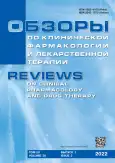Cognitive tests in zebrafish (Danio rerio): T- and Y-mazes
- Authors: Galstyan D.S.1,2,3, Kolesnikova T.O.4, Kositsyn Y.M.1, Zabegalov K.N.4, Gubaidullina M.A.4, Maslov G.O.4,5, Demin K.A.1,4,3, Kalueff A.V.1,2,4,3,5,6,7,8
-
Affiliations:
- Saint Petersburg State University
- A.M. Granov Russian Research Center for Radiology and Surgical Technologies
- Almazov National Medical Research Centre
- Sirius University of Science and Technology
- Ural Federal University
- Novosibirsk State University
- Research Institute of Neuroscience and Medicine
- Moscow Institute of Physics and Technology
- Issue: Vol 20, No 2 (2022)
- Pages: 163-168
- Section: Original study articles
- URL: https://journal-vniispk.ru/RCF/article/view/109705
- DOI: https://doi.org/10.17816/RCF202163-168
- ID: 109705
Cite item
Abstract
T- and Y-shaped mazes are traditionally used to assess spatial learning and memory of zebrafish. In the installation of the T-shaped maze, the fish are taught to swim into the desired sleeve and not swim into the “wrong” one using both positive (for example, food reinforcement) and negative (for example, electric current) stimuli to form more persistent reflexes. The Y-shaped maze is based on the principle of spontaneous choice. Spontaneous choice behavior describes the tendency of animals to change their direction of rotation in a series of successive turns. Each choice statistically depends on the previous one, which indicates its mnestic origin. Unlike other types of memory tasks, testing in the Y-shaped maze does not require prior training or reinforcement (as in the T-shaped maze). Both aquatic mazes are becoming useful tools for assessing zebrafish cognitive phenotypes.
Keywords
Full Text
##article.viewOnOriginalSite##About the authors
David S. Galstyan
Saint Petersburg State University; A.M. Granov Russian Research Center for Radiology and Surgical Technologies; Almazov National Medical Research Centre
Email: david_sam@mail.ru
ORCID iD: 0000-0002-6213-5117
Research Associate
Russian Federation, Saint Petersburg; Saint Petersburg; Saint PetersburgTatyana O. Kolesnikova
Sirius University of Science and Technology
Email: philimontani@yandex.ru
ORCID iD: 0000-0002-5561-8583
SPIN-code: 8558-7887
Research Associate
Russian Federation, SochiYurii M. Kositsyn
Saint Petersburg State University
Email: ikosicin53@gmail.com
ORCID iD: 0000-0002-4266-808X
Research Associate
Russian Federation, Saint PetersburgKonstantin N. Zabegalov
Sirius University of Science and Technology
Email: hatokiri@mail.ru
ORCID iD: 0000-0002-9748-0324
SPIN-code: 5993-6315
Research Associate
Russian Federation, SochiMariya A. Gubaidullina
Sirius University of Science and Technology
Email: mariangub@gmail.com
Research Associate
Russian Federation, SochiGleb O. Maslov
Sirius University of Science and Technology; Ural Federal University
Email: maslovog6@gmail.com
Research Associate
Russian Federation, Sochi; YekaterinburgKonstantin A. Demin
Saint Petersburg State University; Sirius University of Science and Technology; Almazov National Medical Research Centre
Email: deminkasci@gmail.com
SPIN-code: 3830-1853
Cand. Sci. (Biol.), Senior Research Associate
Russian Federation, Saint Petersburg; Sochi; Saint PetersburgAllan V. Kalueff
Saint Petersburg State University; A.M. Granov Russian Research Center for Radiology and Surgical Technologies; Sirius University of Science and Technology; Almazov National Medical Research Centre; Ural Federal University; Novosibirsk State University; Research Institute of Neuroscience and Medicine; Moscow Institute of Physics and Technology
Author for correspondence.
Email: avkalueff@gmail.com
ORCID iD: 0000-0002-7525-1950
SPIN-code: 4134-0515
Dr. Sci. (Biol.), Professor
Russian Federation, Saint Petersburg; Saint Petersburg; Sochi; Saint Petersburg; Yekaterinburg; Novosibirsk; Novosibirsk; MoscowReferences
- Itoh J, Nabeshima T, Kameyama T. Utility of an elevated plus-maze for the evaluation of memory in mice: effects of nootropics, scopolamine and electroconvulsive shock. Psychopharmacology. 1990;101:27–33. doi: 10.1007/BF02253713
- Williams FE, White D, Messer WS Jr. A simple spatial alternation task for assessing memory function in zebrafish. Behav Processes. 2002;58(3):125–132. doi: 10.1016/s0376-6357(02)00025-6
- Jouandot DJ, Echevarria DJ, Lamb EA. The utility of the T-maze in assessing learning, memory, and models of neurological disorders in the zebrafish. Behaviour. 2012;149(10–12):1081. doi: 10.1163/1568539X-00003027
- Ngoc Hieu BT, Ngoc Anh NT, Audira G, et al. Development of a modified three-day t-maze protocol for evaluating learning and memory capacity of adult zebrafish. Int J Mol Sci. 2020;21(4):1464. doi: 10.3390/ijms21041464
- Lalonde R. The neurobiological basis of spontaneous alternation. Neurosci Biobeh Rev. 2002;6(1):91–104. doi: 10.1016/s0149-7634(01)00041-0
- Estes WK, Schoeffler MS. Analysis of variables influencing alternation after forced trials. J Comp Physiol Psychol. 1955;48(5): 357–362. doi: 10.1037/h0043836
- Solomon RL. The influence of work on behavior. Psychol Bull. 1948;45(1):1–40. doi: 10.1037/h0055527
- Walker EL. Action decrement and its relation to learning. Psychol Rev. 1958;65(3):129–142. doi: 10.1037/h0049177
- Aoki R, Tsuboi T, Okamoto H. Y-maze avoidance: An automated and rapid associative learning paradigm in zebrafish. Neurosci Res. 2015;91:69–72. doi: 10.1016/j.neures.2014.10.012






